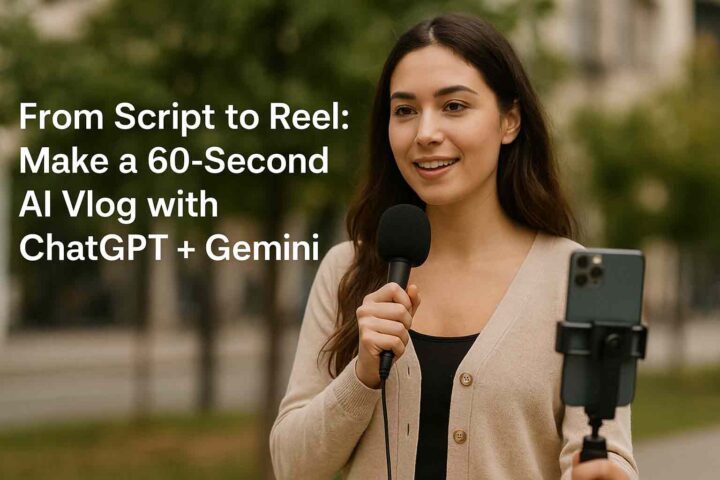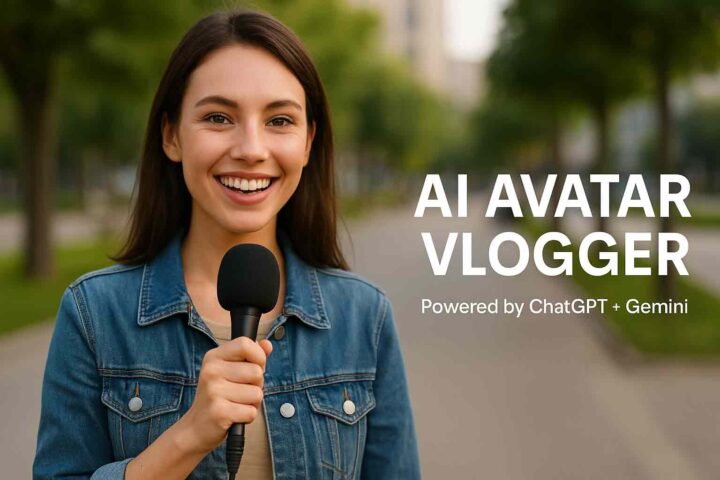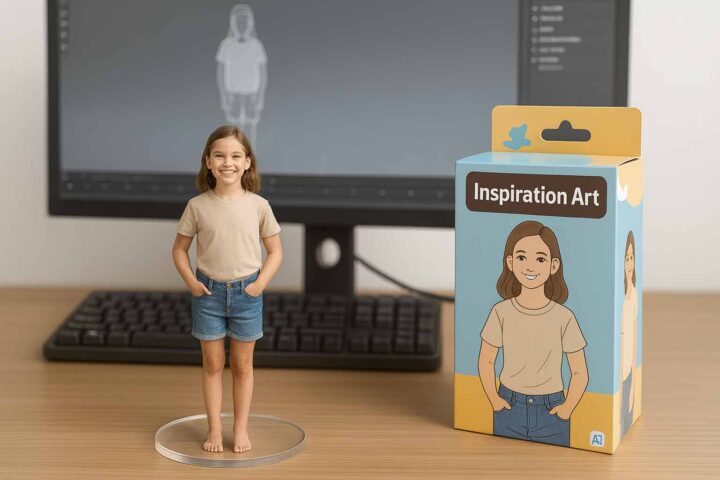If you’ve ever stared at a blank “What’s on your mind?” box or watched the cursor blink inside Instagram, you know the hardest part of social media isn’t posting, it’s creating something worth posting. In 2025, AI finally fixes that. Used well, AI for social media helps you brainstorm hooks, draft captions, design visuals, edit short videos, and schedule across platforms without burning out or sounding robotic. This guide shows you, in plain language, how to create social media posts with AI while keeping your voice, brand, and creativity intact.
Why AI belongs in your content stack
Social platforms reward speed, relevance, and consistency. Humans are great at storytelling and taste. Machines are great at pattern recognition and first drafts. Pair the two and you get faster ideation, tighter copy, and better-format visuals, without the all-nighters. Think of AI as your tireless creative assistant: it suggests viral hooks, repurposes a long post into YouTube Shorts or TikTok ideas, and adjusts tone from playful to professional for LinkedIn. You choose what stays.
A no-overwhelm workflow that actually works
Start with one core idea, say, “five mistakes first-time founders make.” Ask a writing assistant (ChatGPT, Jasper, Notion AI, your pick) to propose three post angles for Instagram, LinkedIn, and X separately. Then request a caption that opens with a strong hook, includes one clear takeaway, and ends with a call-to-action. Keep the version that sounds most like you and tweak a few words so your voice is unmistakable. When the text feels right, jump into a design assistant like Canva AI and generate a clean carousel or story using brand colors and a readable typeface. For short video, paste the same hook into a smart editor such as CapCut or Runway to auto-cut jump edits, captions, and beat-synced music. Finish inside a scheduler (Buffer, Later, Hootsuite or Meta’s native tools), add first-comment hashtags, and set it live.
Hooks, captions, and prompts that don’t feel stale
AI is powerful, but it responds to the inputs you give it. Feed it context and it will return better ideas. Tell it who you’re speaking to, what problem you solve, and how you want followers to feel after reading. Ask for two lengths, a punchy 120-character hook and a 2200-character caption, and choose based on platform. If you’re stuck, simple prompts work wonders: “Write three Instagram hooks that create curiosity about [topic] without clickbait,” “Draft a LinkedIn post that shares a personal lesson about [topic] with a soft CTA to comment,” or “Turn this paragraph into a TikTok script with one spicy opinion and one practical tip.” You’re not outsourcing your voice; you’re outsourcing the “first messy draft” so you can spend energy on nuance.
Designing posts that stop thumbs
The best performing posts look clean, branded, and easy to scan. AI accelerates this without turning everything into the same template. Start with a Canva Magic Design concept based on your headline, then customize: swap in your palette, pick a bolder font for the headline slide, and keep text lines under two for mobile. For image-heavy feeds (Instagram, Pinterest), lean on AI image tools to produce background textures, subtle patterns, or abstract illustrations rather than generic stock. If you’re demoing a product or tutorial, combine a crisp screenshot with an AI-generated accent shape and a single benefit line. Aim for clarity over cleverness, algorithms amplify posts people understand immediately.
Short-form video without the headache
Video is non-negotiable in 2025. You don’t need a studio. Record 30–45 seconds on your phone with clear audio, then let an AI editor handle the time-sucks: trimming silences, adding captions, reframing for 9:16 or 1:1, and generating a dynamic title overlay. If your topic started as a blog, paste a section into your assistant and ask for a three-beat script: hook, value, takeaway. Read it naturally, smile, and ship. Consistency beats perfection, and AI’s job is to remove the friction between you and “post.”
Adapting one idea for every platform
Creators burn out trying to be everywhere with original content. Use AI to repurpose intelligently. Ask your assistant to “rewrite this Instagram caption as a LinkedIn narrative with a professional tone” or “convert this LinkedIn post into five tweet-length thoughts with one thread opener.” Use the same core lesson and let the tool translate audience expectations: more storytelling on LinkedIn, more energy on TikTok, more brevity on X, more visuals on Instagram and Pinterest. This is how brands scale without sounding copy-pasted.
Keeping your voice: the style guide trick
Worried AI will make you sound generic? Build a micro style guide in 10 minutes. Paste two of your favorite posts into your assistant and ask for a distilled voice profile: tone, pacing, sentence length, words you love, words you avoid, and a sample sign-off. Save it. Every time you generate a caption, tell the model to match that voice guide. You’ll get drafts closer to you, and you’ll spend less time rewriting.
Ethics, originality, and disclosure
AI can help with AI content writing and AI image tools, but originality still wins. Share your experiences, data, screenshots, and behind-the-scenes moments, things no model can invent. If a platform requires disclosure for AI-assisted media, follow the rule. When using AI images, avoid copying living artists’ styles and be thoughtful about sensitive topics. The goal isn’t to trick your audience; it’s to serve them better, faster.
Measuring what matters (and training your model)
After a month of consistent posts, audit results. Look at saves, shares, watch time, and comments, not just likes. Paste your top three posts into your assistant and ask, “What do these have in common?” Do the same with underperformers. Ask for a revised content calendar that leans into proven hooks, formats, and posting windows. You’re training your creative system, not just an algorithm.
Choosing tools without choice paralysis
You don’t need a dozen apps. One assistant for words, one for design, one for video, and one for scheduling is enough to win. If you’re deciding between free vs paid AI tools, start with free plans for a week and upgrade only if you hit limits that slow you down. For deeper comparisons when you’re ready to invest, check guides like /free-vs-paid-ai-tools, /canva-ai-magic-tools, and /how-to-use-chatgpt (swap with your site’s actual slugs). The best AI tools are the ones you’ll actually open every day.
A simple weekly rhythm you can stick to
Pick one theme per week, draft on Monday, design Tuesday, film Wednesday, schedule Thursday, and engage Friday. Use AI during ideation and polishing, not as a crutch. By Friday you should have posted three to five times across platforms with a unified message and platform-specific flavor. That cadence is enough to signal relevance to algorithms and reliability to your audience.
SEO and keywords that pull traffic to your site
If your social strategy points back to a blog or landing page, weave high-intent phrases into your on-site copy: create social media posts with AI, AI tools for content creators, AI for social media, AI caption generator, Instagram Reels ideas, YouTube Shorts editing, TikTok script prompts, AI content writing tools, AI video tools, AI image tools, and best AI tools 2025. Use them naturally in headings, intro paragraphs, image alt text, and meta tags. Internally link to related content so readers, and search engines, see your topical depth.
The bottom line
AI won’t replace your taste, your stories, or your brand—but it will remove the friction between your ideas and your audience. Start with one post this week: write the hook with AI, polish the caption in your voice, design a clean graphic, and let an editor add captions to your video. Hit publish, learn, and repeat. The accounts winning in 2025 aren’t the ones posting the most; they’re the ones iterating the fastest.
What part of your workflow needs the most help—hooks, visuals, or video? Tell me in the comments, and I’ll send back a simple AI prompt + mini-workflow you can use on your next post. If this guide helped, share it with a creator friend who’s ready to post smarter, not harder.




